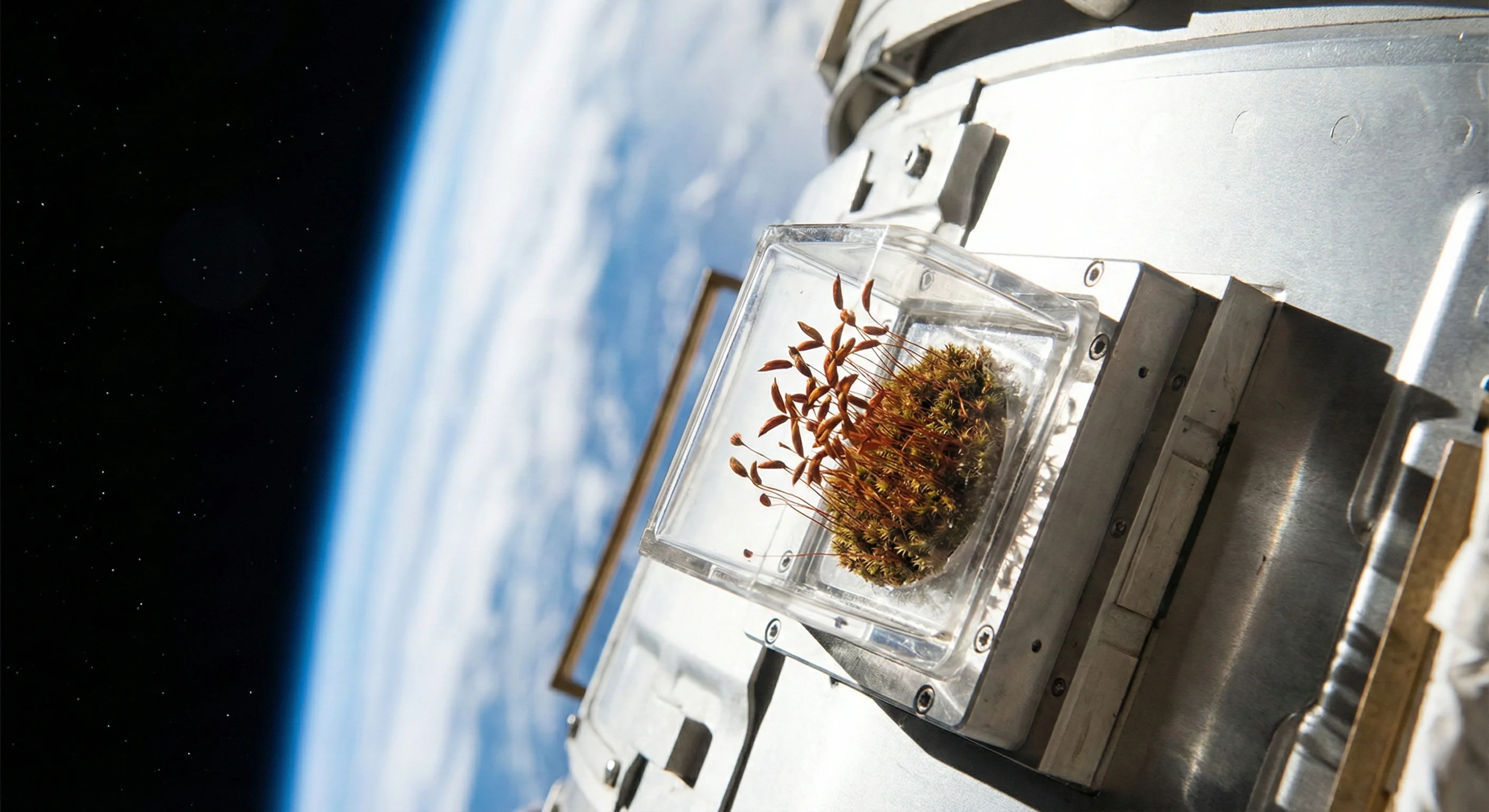Moss's Incredible Space Journey: A Giant Leap for Plantkind
Imagine a future where Martian landscapes are dotted with green, thriving ecosystems. It sounds like science fiction, but recent research suggests it might be more attainable than we thought. Scientists have discovered that moss spores can survive the harsh conditions of space for extended periods, opening up exciting possibilities for terraforming other planets.
In a groundbreaking experiment, researchers from Hokkaido University in Japan sent spores of Physcomitrium patens, also known as spreading earthmoss, to the International Space Station (ISS). These tiny spores were placed on the exterior of the ISS for a staggering nine months, exposed to the vacuum of space, intense UV radiation, extreme temperature fluctuations, and microgravity. The results? Absolutely astonishing.
The Experiment: Exposing Moss to the Cosmos
The experiment was meticulously designed to test the limits of moss's resilience. Here’s a breakdown:
- Sample Selection: Researchers chose sporophytes, the reproductive structures containing moss spores, known for their hardiness.
- Space Exposure: The moss spores were attached to the outside of the ISS, fully exposed to the space environment for 283 days.
- Return to Earth: The samples were brought back to Earth via a Dragon cargo capsule for analysis.
Unexpected Survival Rates
The scientists expected minimal survival, but the reality far exceeded their expectations. More than 80% of the moss spores survived the space journey. Even more impressively, around 86% of the surviving spores were able to germinate and begin growing back on Earth. This remarkable vitality suggests that moss possesses intrinsic mechanisms to endure the extreme conditions of space.
"We expected almost zero survival, but the result was the opposite: Most of the spores survived," said Tomomichi Fujita, the study's lead author.
Why Moss? The Resilience of Earth's Pioneer Plants
Mosses are among the oldest plants on Earth, dating back over 400 million years. They are known for their ability to thrive in extreme environments, from the Arctic tundra to scorching deserts. Their simple structure and unique adaptations make them incredibly resilient. Here’s why moss was an ideal candidate for this experiment:
- Hardiness: Mosses can tolerate extreme temperatures, dehydration, and high levels of radiation.
- Simple Structure: They lack a complex vascular system, making them less susceptible to damage.
- Spore Protection: The sporophytes provide a protective casing for the spores, shielding them from environmental stressors.
The Role of UV Radiation
While most factors had limited impact, exposure to UV radiation did cause some damage. Researchers observed a 20% reduction in chlorophyll a, the primary pigment involved in photosynthesis. Despite this, the spores remained healthy and viable, indicating their ability to repair or mitigate the damage.
Implications for Space Colonization and Terraforming
This research has profound implications for future space exploration and colonization. Moss could play a crucial role in:
- Creating Ecosystems: Moss can help create soil in extraterrestrial environments by breaking down rocks and releasing nutrients.
- Oxygen Production: As photosynthetic organisms, mosses can produce oxygen, a vital resource for sustaining life.
- Life Support: Moss can contribute to humidity control and overall life support systems in space habitats.
Fujita envisions a future where humans build greenhouses on Mars to cultivate plants that are more tolerant of the environment. Moss could be the starting point for establishing sustainable ecosystems on other planets.
Comparing Moss to Other Space Survivors
Moss isn't the only organism to have demonstrated remarkable resilience in space. Bacteria, lichens, plant seeds, and even tardigrades (water bears) have shown the ability to survive the harsh conditions of space. However, the high survival and germination rates of moss spores are particularly noteworthy.
Future Research: What's Next for Space Moss?
The next step for researchers is to assess the DNA damage incurred by the moss spores during their time in space and study how the plants repair that damage. Understanding these repair mechanisms could provide valuable insights into how life can adapt and thrive in extraterrestrial environments.
The Big Picture
The survival of moss spores in space is more than just a scientific curiosity; it represents a significant step forward in astrobiology. It demonstrates the potential for life from Earth to not only survive but also contribute to building sustainable ecosystems beyond our planet. As we look to the future of space exploration, moss may well be our unlikely ally in turning the barren landscapes of other worlds into thriving habitats.
This discovery opens a new chapter in our understanding of life's resilience and its potential to shape the future of space colonization. Who knew that such a simple plant could hold the key to terraforming other worlds?

